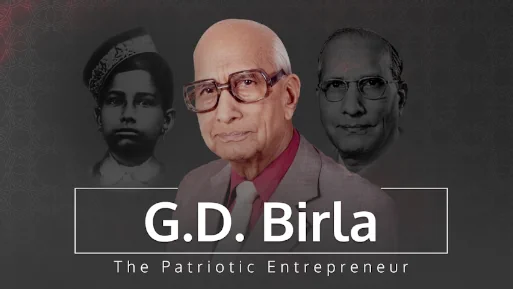Think of unsecured creditors, too
02 April, 2018 | Financial Express
ShareIn the Binani matter, is payment of 100 per cent dues to all creditors subversion of insolvency process?
Widespread misinformation and a vilification campaign on the Binani offer is indeed regrettable. Significant facts have not been brought to the notice of the public. It is suggested in the media that the insolvency process is being subverted by UltraTech by submitting a higher offer or that insolvency process is being bypassed by Binani Industries Ltd (the promoter of Binani Cement Ltd) by making an application for permission to fully pay off all creditors. While making these suggestions what is being completely forgotten is the very purpose for which the Act was enacted i.e. “maximisation of values” for the purpose of recovery to all stakeholders.
The purpose of maximisation of value is to ensure least loss or haircut to various classes of the creditors. Towards this, the Act provides for appointment of a resolution professional (RP) and the formation of a Committee of Creditors (CoC). The RP and CoC are in the nature of a trustee to safeguard the interests of all the stakeholders. Although the voting pattern for any decision in the CoC is completely in favour of the secured creditors, under law the secured creditors are expected to look after not just their own interest, but also to safeguard the interests of other unsecured creditors and trade creditors who may not have an effective voice in the CoC. The secured creditors, therefore, have a fiduciary obligation to all the other stakeholders.
Regulations for achieving these objectives
The following sections of the Insolvency and Bankruptcy Code (IBC) seek to achieve the first object, namely maximisation of value:
- Sections 17/18/22/23 vesting powers of the BoD in the RP, thereby RP assuming the role in a fiduciary position for all of its stakeholders;
- Section 20/25 requiring RP to preserve and protect the value of property;
- Section 29 read with regulation 36 preparation of the information of memorandum for the purpose of inviting bids; Regulation 27 and regulation 35 for ascertaining value including liquidation value as a minimum benchmark.
Balancing interest of all the stakeholders
The RP, who is under fiduciary obligations, and the financial creditors as mortgagee who are under similar obligations are required to preserve and protect the interest of mortgagor and other stakeholders;
Regulation 38 (1A), therefore, requires resolution plans to contain a statement as to how it has dealt with the interest of all the stakeholders including operational creditors.
The process for maximisation of value of assets
Neither the IBC nor the regulations prescribe any process for achieving these objectives. This is because both the RP and CoC are under fiduciary obligations and there would be more than one way of achieving these.
The evolution of the process for maximisation of value is, therefore, left to the CoC under the IBC. As a result, the process has to help the RP and CoC to achieve the above objectives.
The CoC is obliged under regulation 39 that compliant resolution plans are placed before them to enable them to approve any plan with such modifications as they may deem fit.
A process that does not achieve the stated objective of maximisation of value of assets would be against public interest. It is the objective sought to be achieved by the Act that has to guide the process and not the other way round. A process that condones failure to consider a higher financial offer or supports causation of loss of hundreds of crores to unsecured and other creditors would be subversive of the IBC.
Under the Act, the CoC is expected to evolve a fair and transparent process. The Act could not have conceived of supporting a process that ignores and destroys value available to various stakeholders including banks etc.
The Act entails that the process followed by the CoC is subject to confirmation and approval by the NCLT and is required to ensure that due process has been followed and the objective of the Act, i.e. maximisation of values, has been achieved.
Those who are seeking to discount Binani’s offer of seeking termination of the IBC process by redeeming the mortgage property by paying off all outstanding dues to the mortgagor are ignorant of the first principle of law as enshrined in the Transfer of Property Act, which is that the mortgagor is entitled to redeem mortgage at any point in time until the time the mortgage property is sold. The said principle is affirmed by the Supreme Court several times under different enactments; for example, Debt Recovery Act, SARFAESI Act.
The CoC is required to fulfil the obligation of a trustee and safeguard the financial interest of the unsecured creditors. By not considering an increased offer, a direct loss is being caused to various unsecured and other creditors. This financial loss caused to financial creditors translates into an equal uncalled for bonanza to the successful bidder.
Even as the IBC confers wide powers on the CoC and RP under the Act, it could never have desired or intended this result where a third party bidder gets to make a huge benefit by causing loss to the unsecured and other creditors. In fact, the obligation of a liquidator or an auctioneer of a company in liquidation is to maximise values and recover the highest possible amount in order to make sure no loss is caused to any stakeholder.
The Supreme Court and the High Courts have passed innumerable judgments highlighting the role of the company and the liquidator while auctioning companies’ property. Any higher offer received prior to confirmation of sale cannot be ignored since the obligation of a trustee is to safeguard the interest of the people whose rights and interest are meant to be safeguarded.
By Mahesh Agarwal, Managing partner, Agarwal Law Associates, New Delhi






